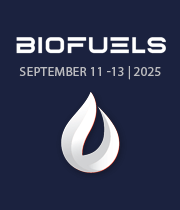Title : Biomass to biofuel boosters: Conversion of furfuryl alcohol to ethyl levulinate
Abstract:
The growing global interest in biomass-based platform chemicals and renewable fuels marks them out as sustainable alternatives for depleting fossil fuel deposits. Environmental interests and the imperative to switch over to renewable sources drive this burgeoning interest largely. Lignocellulosic biomass (LB) is an important mover of this trend, prized for its non-competitive nature relative to food resources as well as minimal land use effect. Among the numerous derivatives derived from LB, alkyl levulinates (ALs) — prepared by reacting levulinic acid with various alkyl alcohols like methyl, ethyl, butyl, and others — have shown versatile uses in industries ranging from agriculture to cosmetics, plastics, pharmaceuticals, food, and transportation. Their versatility lies in their ability to act as key platform chemicals that can give rise to a wide range of high-value products. In particular, ethyl levulinate (EL) has received much interest due to its promising characteristics as a renewable energy feedstock, particularly as a fuel additive that does not necessitate any engine design changes. This research focuses on the catalytic synthesis of EL from furfuryl alcohol (FAL) with the aid of natural soil-derived silicate catalysts. In addition, the study covers hydroxyapatite (HAP) synthesis as well as the composite material incorporating HAP with H-ZSM-5 and their application towards enhancing EL yields. Catalysts were synthesized by a hydrothermal process and assessed using a battery of techniques comprising X-ray diffraction (XRD), nitrogen adsorption-desorption (N?-sorption), scanning electron microscopy (SEM), transmission electron microscopy (TEM), Fourier-transform infrared spectroscopy (FTIR), and pyridine-adsorbed FTIR (Py-FTIR). Characterization tests established that H-ZSM-5/HAP composite retained individual characteristics of each of the component H-ZSM-5 and HAP and helped increase the catalytic efficiency. Screening tests showed that composite catalyst registered highest EL yield of about 85%. Reaction conditions were subsequently optimized by performing studies using response surface methodology (RSM) by a Box-Behnken design that yielded a higher EL yield of around 88% under the optimal conditions. This high-performance activity is due to the homogeneous distribution of Ca/P and Si/Al ions in the catalyst structure. Overall, the research highlights the possibility of integrating naturally abundant materials with engineered structures to design efficient catalysts for the sustainable production of renewable fuels.



